Review: 2014 Range Rover Supercharged LWB

In the early 1990s Land Rover realized that their Range Rovers were often used to chauffeur people of wealth and taste. Designed to be capable off-road, the 100-inch wheelbase unfortunately meant limited rear seat leg room. For 1992 Range Rover Country LWB became available, with a wheelbase stretched additional eight inches, all of it going directly into the rear seat legroom. For 2014, Land Rover is bringing the LWB back.
The LWB adds 7.3-inches to wheelbase of a conventional Range Rover, all of which goes directly into the rear seat leg room. The current Range Rover does not suffer from lack of leg room but this extra space transforms it into something resembling a Learjet, especially when equipped with the “Executive Seating Package”. This test model retains a conventional three passenger bench that is power reclining and folding and has heated and ventilated outboard seats. Features bundled into the LWB model include an extended center console, which oddly takes leg room away from the middle passenger, power window shades, and a panoramic sunroof.
The front seats remain the same as on the SWB model, which is to say really nice; wrapped in soft leather, supportive, with pillow-like headrests, and ergonomically perfect. These may just be the best seats on the market right now, and they were heated, ventilated, and massaging, too. The massage feature is nice, especially on longer drives, but it is not as intense as the chairs at Brookstone. The current Range Rover retains the signature high seating position and large windows all around yield airy cabin feel and outstanding visibility, all rather trivial traits that are rarely seen in modern vehicles.
The gauge cluster is actually a 12.3-inch display screen that is cleanly laid out and easy to manipulate via a steering wheel stalk. The same cannot be said for the 8-inch infotainment touch-screen which is slow to respond and simply outdated. In the touch-screen’s defense, it does perform a lot of functions, and there are hard buttons for the most frequently used ones. The rest of the dash is a showcase of simple contemporary design wrapped high quality materials. The upgraded Meridian Premium Audio 825W system will make even Justin Bieber’s music sound good.
For 2014 Land Rover dropped its naturally aspirated V8 in favor of a supercharged V6. The LWB is available only with the more powerful supercharged V8 engine. 510hp and a very flat torque curve that peaks at 461lb-ft offers instantaneous power at anytime, making the 5320-pound Rover move like a sports sedan, and allowing it to accelerate from zero to 60mph in under 5.5 seconds. Having reviewed the V6-powered Range Rover Sport in the past, I think the V8 is worth every penny of its $10,000 premium on the SWB and Sport, Range Rovers. ZF eight-speed automatic transmission is the only choice. It has normal, sport and manual modes, but with this much power, I found myself just keeping the shift knob in D.
We, as the car buying and driving public, are jaded by the driving characteristics of modern cars. For instance, never before would some wanker blogger be able to take a 707hp car on a race track and not die within a minute. The same true holds for this Range Rover – the chassis dynamics and overall handling are downright amazing for a vehicle this size, and simply superior any previous Land Rover product. This was something I realized on an enjoyable drive down the Merritt Parkway, a road where more than a decade ago I came close to rolling a Discovery on.
Much of the handling can be attributed to the air suspension, and associated cleverly named subcomponents, which magically manage to filter out just about all road imperfections while keeping the big Rover composed, and dare I say sporty. While air suspension systems have a lot of critics (disclaimer: I’ve owned two vehicles with air suspension and didn’t have any issues), it may be the least compromised way of retaining comfortable ride, great handling, and big load capacity. The ability to raise and lover this vehicle by as much as five inches is an added benefit. Turning radius is now also large sedan-like, as opposed to tractor-like on older Landies.
It is well known that most Range Rovers never leave pavement, but despite that Land Rover does offer some amazing off-road technology that enables these vehicles to be truly capable (11” ground clearance, 35” water fording), as I experienced some time ago (part 1, 2, 3). What many people forget is that these vehicles also offer 7716-pound towing capacity with 331-pound maximum tongue weight, and 220-pound roof rack capacity. This is in addition to the 82.8 cubic feet of cargo space and 1600-pound load capacity, all just a little less than the GMC Yukon.
All of this goodness comes at a price. First you pay at the dealer: the base Range Rover starts at $84,225. Do yourself a favor and get the “supercharged” one, which is to say V8, for $101,025. The LWB comes with the V8 and starts at $106,225. The test vehicle was equipped with Vision Assist Pack (cameras, swiveling headlights, blind spot detection) for $1760, Lane Departure Warning for $640, Adaptive Cruise Control for $1295, Meridian audio upgrade for $1825, Four Zone Climate Control Package $4150, parking sensors for $1200, rear seat entertainment is $2400, soft closing doors are $600, and towing package which includes a full-size spare and locking rear diff is $1300. This brings the total MSRP to $121, 390. Then you have to pay at the pump to feed an SUV that sips premium gas to the tune of 14/19 mpg city/highway.
While this is not a perfect vehicle, it is the best Range Rover ever. The LWB adds space that most buyers won’t opt for, not because of the cost but because the elongated body visually throws off the proportions. There are dozens of so-called premium luxury SUVs on the market, many of which cost half as much, but none of them, as we will soon find out, are as refined to the level of the Range Rover.
Kamil Kaluski is the East Coast Editor for Hooniverse.com. His ramblings on Eastern European cars, $500 racers, and other miscellaneous automotive stuff can be found there.
Jaguar Land Rover North America, LLC provided the vehicle for this review.

More by Kamil Kaluski
Latest Car Reviews
Read moreLatest Product Reviews
Read moreRecent Comments
- W Conrad I'm not afraid of them, but they aren't needed for everyone or everywhere. Long haul and highway driving sure, but in the city, nope.
- Jalop1991 In a manner similar to PHEV being the correct answer, I declare RPVs to be the correct answer here.We're doing it with certain aircraft; why not with cars on the ground, using hardware and tools like Telsa's "FSD" or GM's "SuperCruise" as the base?Take the local Uber driver out of the car, and put him in a professional centralized environment from where he drives me around. The system and the individual car can have awareness as well as gates, but he's responsible for the driving.Put the tech into my car, and let me buy it as needed. I need someone else to drive me home; hit the button and voila, I've hired a driver for the moment. I don't want to drive 11 hours to my vacation spot; hire the remote pilot for that. When I get there, I have my car and he's still at his normal location, piloting cars for other people.The system would allow for driver rest period, like what's required for truckers, so I might end up with multiple people driving me to the coast. I don't care. And they don't have to be physically with me, therefore they can be way cheaper.Charge taxi-type per-mile rates. For long drives, offer per-trip rates. Offer subscriptions, including miles/hours. Whatever.(And for grins, dress the remote pilots all as Johnnie.)Start this out with big rigs. Take the trucker away from the long haul driving, and let him be there for emergencies and the short haul parts of the trip.And in a manner similar to PHEVs being discredited, I fully expect to be razzed for this brilliant idea (not unlike how Alan Kay wasn't recognized until many many years later for his Dynabook vision).
- B-BodyBuick84 Not afraid of AV's as I highly doubt they will ever be %100 viable for our roads. Stop-and-go downtown city or rush hour highway traffic? I can see that, but otherwise there's simply too many variables. Bad weather conditions, faded road lines or markings, reflective surfaces with glare, etc. There's also the issue of cultural norms. About a decade ago there was actually an online test called 'The Morality Machine' one could do online where you were in control of an AV and choose what action to take when a crash was inevitable. I think something like 2.5 million people across the world participated? For example, do you hit and most likely kill the elderly couple strolling across the crosswalk or crash the vehicle into a cement barrier and almost certainly cause the death of the vehicle occupants? What if it's a parent and child? In N. America 98% of people choose to hit the elderly couple and save themselves while in Asia, the exact opposite happened where 98% choose to hit the parent and child. Why? Cultural differences. Asia puts a lot of emphasis on respecting their elderly while N. America has a culture of 'save/ protect the children'. Are these AV's going to respect that culture? Is a VW Jetta or Buick Envision AV going to have different programming depending on whether it's sold in Canada or Taiwan? how's that going to effect legislation and legal battles when a crash inevitibly does happen? These are the true barriers to mass AV adoption, and in the 10 years since that test came out, there has been zero answers or progress on this matter. So no, I'm not afraid of AV's simply because with the exception of a few specific situations, most avenues are going to prove to be a dead-end for automakers.
- Mike Bradley Autonomous cars were developed in Silicon Valley. For new products there, the standard business plan is to put a barely-functioning product on the market right away and wait for the early-adopter customers to find the flaws. That's exactly what's happened. Detroit's plan is pretty much the opposite, but Detroit isn't developing this product. That's why dealers, for instance, haven't been trained in the cars.
- Dartman https://apnews.com/article/artificial-intelligence-fighter-jets-air-force-6a1100c96a73ca9b7f41cbd6a2753fdaAutonomous/Ai is here now. The question is implementation and acceptance.



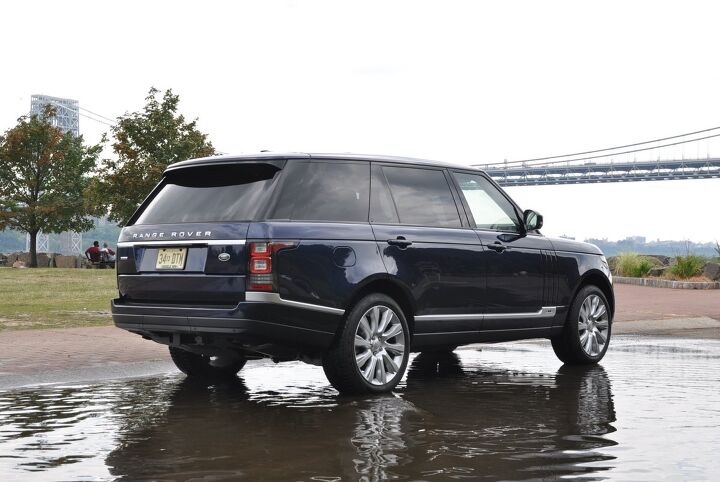





















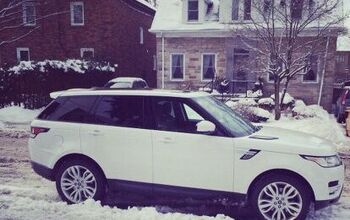
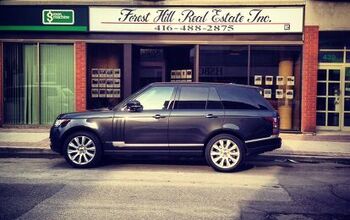

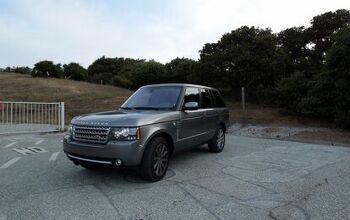
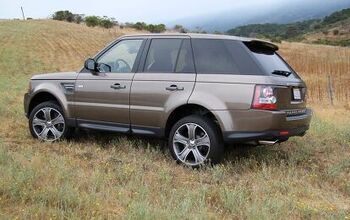










Comments
Join the conversation
That dashboard is so glorious and true. Look at those parallel horizontal lines running from the driver's door to the passenger's door. No hinky center stack canted toward the driver. No passenger-side knee bolsters tapering and rising at weird angles. Compare this with, say, the 2015 Honda Fit, whose dashboard is a mess of different forms working against each other.
One percenter grocery-go-getter. 0-60 in 5.5. $120K to ? in 5.5 years. And you know pity the poor sod who's got to keep that interior clean from greasy kid marks to bloody hemorrhoid stains. Air suspension can it handle 2 de Gaulle flats? That's important to some of the clientele. Otherwise nice job. I'm just jealous.